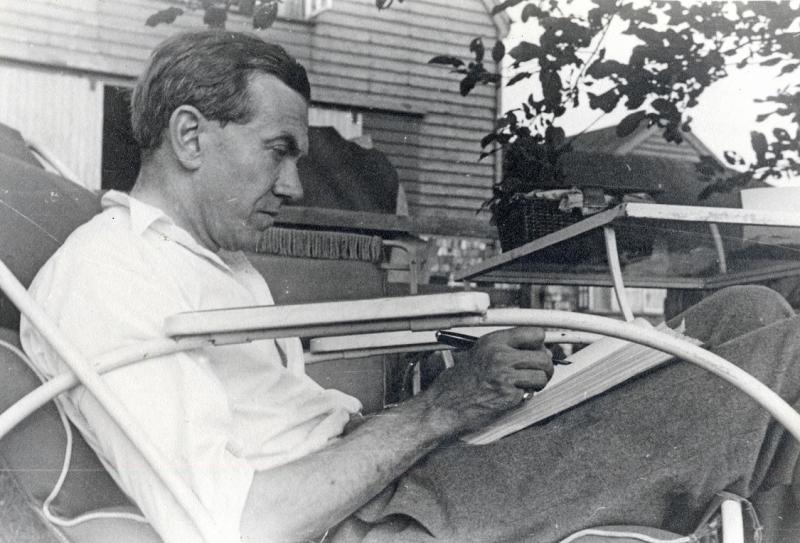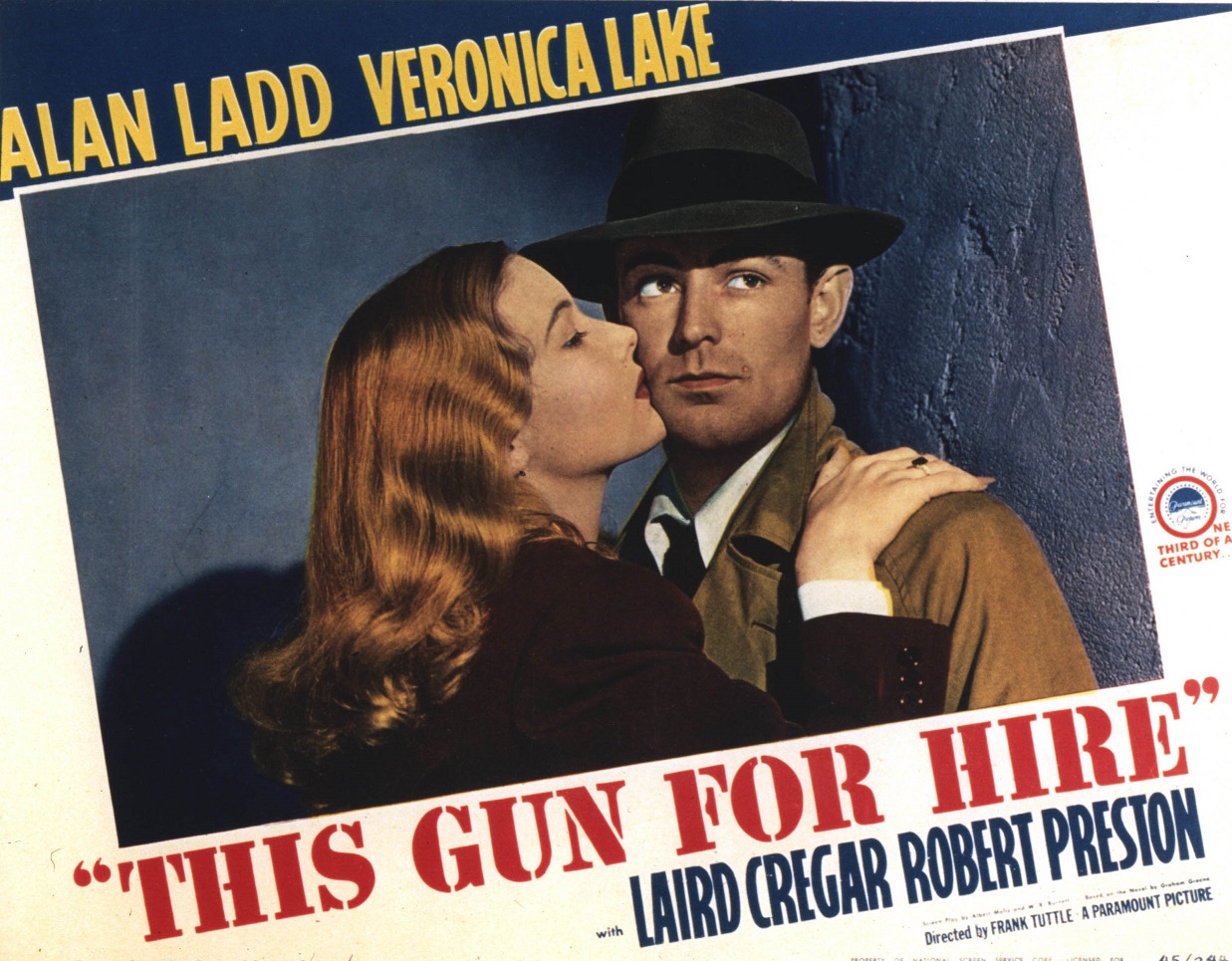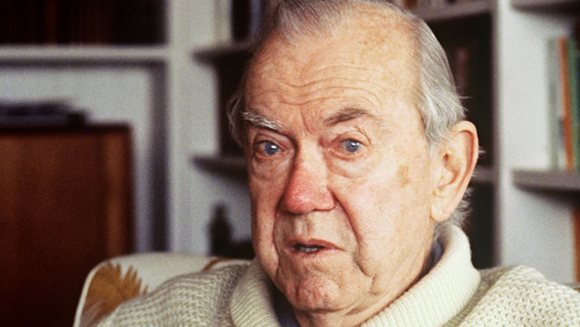Dangerous Edge: A Life of Graham Greene, Sky Arts 1 | reviews, news & interviews
Dangerous Edge: A Life of Graham Greene, Sky Arts 1
Dangerous Edge: A Life of Graham Greene, Sky Arts 1
Psychological focus on the writer, strongest on Greene as traveller and film enthusiast

Early on in Dangerous Edge: A Life of Graham Greene, John le Carré remembers Greene telling him that childhood provides “the bank balance of the writer”.
Greene went to Berkhamstead School, where his father was headmaster, and was bullied, not least for the assumption that he was a spy for paternal authority (the spy persona would return later in reality; psychologically he himself remained “his most elusive character”). He experienced profound depression – those brushes with suicide through Russian roulette – and at the age of 16 underwent six months of psychoanalysis, an experience certainly progressive for its time. One of his therapist’s recommendations was that Greene pursue writing.
Travel and the act of writing itself his were ways of dealing with that depression
It wasn’t termed bipolar depression then, but director Thomas P O’Connor’s film, the first American-produced study of the writer, originally made for PBS, treats Greene’s life and work through that prism. Travel and the act of writing itself were ways of dealing with that depression (Greene frequently used the word “boredom” to convey the sense of his “disturbance with the universe”), which also left him ill-suited to domesticity.
His long-suffering wife Vivien knew that better than anyone – he had told her that he had “a character profoundly antagonistic to ordinary domestic life”, but that “unfortunately, the disease is also one’s material.” That meant that he was unfaithful to her, and their Catholicism prevented a separation. The closest of his later relationships, from which came The End of the Affair, was arguably that with Catherine Walston, who was as complicated (and promiscuous, we hear here) as he was (the situation had been pre-visited in The Heart of the Matter, whose hero, Scobie, stays true to his final appointment with the revolver).
 Dangerous Edge excels in its use of archive, on two fronts particularly - the travels, and Greene’s (and his novels’) connections with cinema. That restlessness – little surprise he titled his memoir Ways of Escape – and those commissioned journeys that answered an addiction to danger would bring forth both the travel books, and the physical and psychological landscapes of so many of the great novels. On the personal front Africa was as important a destination as any: on his very first trip outside Europe, to Liberia in 1935 for A Journey Without Maps, he nearly died of sickness and discovered a “passionate interest in living”; at a spiritual low point in the late Fifties, he would return to the leper colonies of the Congo, and recover himself (A Burnt-Out Case, a self-portrait with more adultery).
Dangerous Edge excels in its use of archive, on two fronts particularly - the travels, and Greene’s (and his novels’) connections with cinema. That restlessness – little surprise he titled his memoir Ways of Escape – and those commissioned journeys that answered an addiction to danger would bring forth both the travel books, and the physical and psychological landscapes of so many of the great novels. On the personal front Africa was as important a destination as any: on his very first trip outside Europe, to Liberia in 1935 for A Journey Without Maps, he nearly died of sickness and discovered a “passionate interest in living”; at a spiritual low point in the late Fifties, he would return to the leper colonies of the Congo, and recover himself (A Burnt-Out Case, a self-portrait with more adultery).
Greene must be one of the most filmed authors of his century, and that's no less comprehensively illustrated here. Like his division of his literary output into novels and “entertainments”, the latter designed as much as anything to pay the bills, films were even more lucrative when they worked out, and talked down by Greene in the same way (“I’m trusting the shocker to pay,” he wrote to his brother of his 1936 novel A Gun for Sale, later filmed as This Gun for Hire, poster above left). But the connection was far greater, as Greene himself would admit: “When I describe a scene… I capture it with the moving eye of the cine-camera rather than with the photographer’s eye.”
Dangerous Edge gives more attention to pictures than to people. Running to a compact hour, its virtue as an overview is considerable, making for a briskness that is bound to strike when set against the three-part Arena film from the early 1990s. Greene himself features in a couple of earlier screen interviews (in one he relates how "Papa Doc" Duvalier reacted to his depiction of Haiti in The Comedians), but it’s his voice (extracts from the works are read with great character by Bill Nighy) that guides us, and we hear Vivien too. Derek Jacobi narrates, and the assembled talking heads certainly give a sense of Greene’s personality (Greene in later life, below right). There’s bite-sized critical commentary from David Lodge, even if we wonder how much the frame of some of that explication (“the novel begins…”) is aimed at Greene novices.
 The shortcoming of such an approach to "talking heads” is how it limits the potential expansion of perspective to half-portrait or even (perish the thought!) portrait-in-landscape, and excludes the more garrulous complexity that, some would say, is life’s true fabric. It’s an approach to documentary-making, arguably more American in character, that puts fact first. Paradoxically Greene might have approved – his own prose was always informational, pragmatic even. And he wrote: “If one knew, he wondered, the facts, would one have to feel pity even for the planets?” Yet that’s surely as ambiguous a sentence as ever came from his pen.
The shortcoming of such an approach to "talking heads” is how it limits the potential expansion of perspective to half-portrait or even (perish the thought!) portrait-in-landscape, and excludes the more garrulous complexity that, some would say, is life’s true fabric. It’s an approach to documentary-making, arguably more American in character, that puts fact first. Paradoxically Greene might have approved – his own prose was always informational, pragmatic even. And he wrote: “If one knew, he wondered, the facts, would one have to feel pity even for the planets?” Yet that’s surely as ambiguous a sentence as ever came from his pen.
rating
Share this article
Add comment
The future of Arts Journalism
You can stop theartsdesk.com closing!
We urgently need financing to survive. Our fundraising drive has thus far raised £49,000 but we need to reach £100,000 or we will be forced to close. Please contribute here: https://gofund.me/c3f6033d
And if you can forward this information to anyone who might assist, we’d be grateful.

Subscribe to theartsdesk.com
Thank you for continuing to read our work on theartsdesk.com. For unlimited access to every article in its entirety, including our archive of more than 15,000 pieces, we're asking for £5 per month or £40 per year. We feel it's a very good deal, and hope you do too.
To take a subscription now simply click here.
And if you're looking for that extra gift for a friend or family member, why not treat them to a theartsdesk.com gift subscription?
more TV
 Coldwater, ITV1 review - horror and black comedy in the Highlands
Superb cast lights up David Ireland's cunning thriller
Coldwater, ITV1 review - horror and black comedy in the Highlands
Superb cast lights up David Ireland's cunning thriller
 Blu-ray: The Sweeney - Series One
Influential and entertaining 1970s police drama, handsomely restored
Blu-ray: The Sweeney - Series One
Influential and entertaining 1970s police drama, handsomely restored
 I Fought the Law, ITVX review - how an 800-year-old law was challenged and changed
Sheridan Smith's raw performance dominates ITV's new docudrama about injustice
I Fought the Law, ITVX review - how an 800-year-old law was challenged and changed
Sheridan Smith's raw performance dominates ITV's new docudrama about injustice
 The Paper, Sky Max review - a spinoff of the US Office worth waiting 20 years for
Perfectly judged recycling of the original's key elements, with a star turn at its heart
The Paper, Sky Max review - a spinoff of the US Office worth waiting 20 years for
Perfectly judged recycling of the original's key elements, with a star turn at its heart
 The Guest, BBC One review - be careful what you wish for
A terrific Eve Myles stars in addictive Welsh mystery
The Guest, BBC One review - be careful what you wish for
A terrific Eve Myles stars in addictive Welsh mystery
 theartsdesk Q&A: Suranne Jones on 'Hostage', power pants and politics
The star and producer talks about taking on the role of Prime Minister, wearing high heels and living in the public eye
theartsdesk Q&A: Suranne Jones on 'Hostage', power pants and politics
The star and producer talks about taking on the role of Prime Minister, wearing high heels and living in the public eye
 King & Conqueror, BBC One review - not many kicks in 1066
Turgid medieval drama leaves viewers in the dark
King & Conqueror, BBC One review - not many kicks in 1066
Turgid medieval drama leaves viewers in the dark
 Hostage, Netflix review - entente not-too-cordiale
Suranne Jones and Julie Delpy cross swords in confused political drama
Hostage, Netflix review - entente not-too-cordiale
Suranne Jones and Julie Delpy cross swords in confused political drama
 In Flight, Channel 4 review - drugs, thugs and Bulgarian gangsters
Katherine Kelly's flight attendant is battling a sea of troubles
In Flight, Channel 4 review - drugs, thugs and Bulgarian gangsters
Katherine Kelly's flight attendant is battling a sea of troubles
 Alien: Earth, Disney+ review - was this interstellar journey really necessary?
Noah Hawley's lavish sci-fi series brings Ridley Scott's monster back home
Alien: Earth, Disney+ review - was this interstellar journey really necessary?
Noah Hawley's lavish sci-fi series brings Ridley Scott's monster back home
 The Count of Monte Cristo, U&Drama review - silly telly for the silly season
Umpteenth incarnation of the Alexandre Dumas novel is no better than it should be
The Count of Monte Cristo, U&Drama review - silly telly for the silly season
Umpteenth incarnation of the Alexandre Dumas novel is no better than it should be
 The Narrow Road to the Deep North, BBC One review - love, death and hell on the Burma railway
Richard Flanagan's prize-winning novel becomes a gruelling TV series
The Narrow Road to the Deep North, BBC One review - love, death and hell on the Burma railway
Richard Flanagan's prize-winning novel becomes a gruelling TV series

Comments
A balanced review. The author